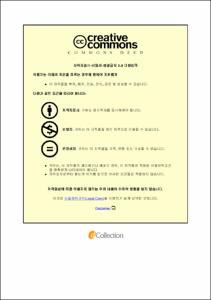Control strategy against ripe rot on the kiwifruit caused by Botryosphaeria dothidea in storage
- Abstract
- Ripe rot on kiwifruit caused by Botryosphaeria dothidea has been severed recently in the kiwi orchards in Jeju. In this study, in order to protect the kiwifruit from the disease effectively, current pathogen infection frequency and disease infection activated period were investigated. To know infection frequency by ripe rot, 86 kiwi fruits were collected and identified. Also, the kiwifruits from two orchards were sealed on different 11 periods during cultivation and counted infected kiwi fruit after harvest during storage season for window infection. In the result of disease infection frequency check test, 76 % of kiwifruits shown the disease symptoms were identified as B. dothidea. In the window infection, most of kiwi fruits were infected during fruitset to late June period. Basis on these results, most of postharvest disease was caused by B. dothidea and it was suggested that efficient control treatment should be carried out during May to June.
The ascomycete fungus Botryosphaeria dothidea is the causal agent of postharvest rot in kiwifruit. Production and spreading of conidia, differentiation of infection hyphae and invasion of intact fruit surfaces are required to cause fruit rot disease. In several pathogenic fungi, the homolog of the Saccharomyces cerevisiae mitogen activated protein kinase (MAPK) gene Fus3 has been identified as a pathogenicity factor. To investigate the role of the Fus3 homolog in B. dothidea, the gene was deleted and the resulting ∆fus3 mutants were characterized. On artificial media, strong growth defects of ∆fus3 strains were observed and mycelia were non-pigmented, and mutants were unable to conidiate. Scanning electron microscopy showed that the wildtype strain differentiated thick hyphae on the surface of kiwifruits, and nose-down growth of hyphae indicated tight attachment to the fruit. By contrast, hyphae of ∆fus3 strains mutants were thinner and did not firmly attach to the fruit surface. Importantly, pathogenicity test revealed that ∆fus3 strains were unable to cause disease symptoms on intact kiwifruits. These results shown here identify Fus3 of B. dothidea as a novel pathogenicity factor of the ripe rot pathogen on kiwifruit.
Ripe rot caused by B. dothidea is one of the serious diseases in postharvest kiwifruits. In order to control the ripe rot on A. chinensis cultivar Gold3, several commercial fungicides were selected by antifungal test on an artificial medium. Furthermore, disease suppression by the selected fungicides was evaluated on the kiwifruits by inoculation with conidial suspension of B. dothidea. On the artificial medium Tebuconazole, Iprodione and Boscalid+Fludioxonil were shown the most effective antifungal activity. However, in the bio-test Pyraclostrobin+Boscalid and Iminoctadine-tris were the most effective agrichemicals on the kiwifruits. On the other hand, the infection structures of B. dothidea on kiwifruits treated with agrichemical Pyraclostrobin+Boscalid were observed with a fluorescent microscope. Most of conidia of the fungus were not germinated on the kiwifruit treated with the agrichemical whereas on the untreated fruit the fungal conidia were mostly germinated. Also, chemical residue of of Pyraclostrobin + Boscalid was measured lower than MRL standard in Korea until 1 month before harvest. Based on this observation it was suggested that the ripe rot may be suppressed through the inhibition of conidial germination on the kiwifruit treated with the agrichemical.
- Issued Date
- 2024
- Awarded Date
- 2024-02
- Type
- Dissertation
- Alternative Author(s)
- Shin Yong Ho
- Affiliation
- 제주대학교 대학원
- Department
- 대학원 농학과
- Advisor
- 전용철
- Table Of Contents
- Part A. Field study of ripe rot infection
ABSTRACT 1
Ⅰ. INTRODUCTION 2
Ⅱ. MATERIALS AND METHODS 5
1. Miscellaneous isolations
A. Morphological analysis
B. Molecular analysis
2. Window infection
A. Treatment in orchard
B. Fungal isolation and identification
Ⅲ. RESULTS 10
1. Miscellaneous isolations
2. Window infection
Ⅳ. DISCUSSION 18
Ⅴ. 적 요 21
Ⅵ. REFERENCES 22
Part B. Genetic control in kiwifruit against ripe rot
ABSTRACT 30
Ⅰ. INTRODUCTION 31
Ⅱ. MATERIALS AND METHODS 34
1. Isolation of B. dothidea from ripe rot lesions of kiwifruits
2. Identification of the B. dothidea FUS3 gene and generation of the deletion cassette
3. Protoplast transformation
4. Southern blot analysis
5. Vegetative development
6. Pathogenicity test
7. Microscopy
8. Statistical analysis.
Ⅲ. RESULTS 41
1. Fungal strain identification and gene characteristic
2. Targeted deletion of Fus3
3. Vegetative development of B. dothidea WT and Δfus3 strains
4. Pathogenicity of the Δfus3 mutants
Ⅳ. DISCUSSION 52
Ⅴ. 적 요 66
Ⅵ. REFERENCES 63
Part C. Chemical control of kiwifruit against ripe rot
ABSTRACT 77
Ⅰ. INTRODUCTION 78
Ⅱ. MATERIALS AND METHODS 79
1. Fruit material
2. Fungal inoculum
3. Agrochemical evaluation
4. Observation with a fluorescence microscope
5. Scanning electron microscopy of the kiwifruit after fungal inoculation
6. Test of chemical residue
7. Statistical analysis
Ⅲ. RESULTS 85
1. Antifungal effect on PDA medium amended with agrochemicals
2. Disease suppression on kiwifruit treated with agrochemicals
3. Fluorescent microscopy
4. Scanning electron microscopy
5. Test of chemical residue
Ⅳ. DISCUSSION 98
Ⅴ. 적 요 101
Ⅵ. REFERENCES 102
- Degree
- Doctor
- Publisher
- 제주대학교 대학원
- Citation
- 신용호. (2024). Control strategy against ripe rot on the kiwifruit caused by Botryosphaeria dothidea in storage.
- Appears in Collections:
- General Graduate School > Agricultural Science
- 파일 목록
-
-
Download
 Control strategy against ripe rot on the kiwifruit caused by Botryosphaeria dothidea in storage.pdf
기타 데이터 / 9.77 MB / Adobe PDF
Control strategy against ripe rot on the kiwifruit caused by Botryosphaeria dothidea in storage.pdf
기타 데이터 / 9.77 MB / Adobe PDF
-
Items in Repository are protected by copyright, with all rights reserved, unless otherwise indicated.